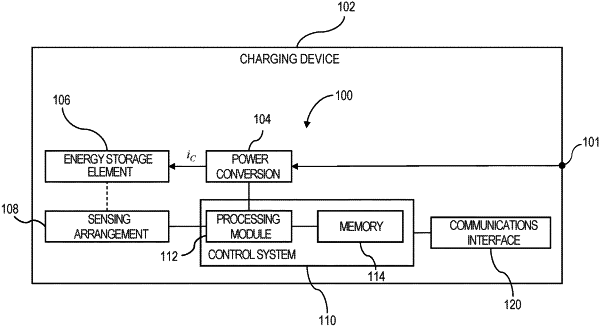| CPC H02J 7/0049 (2020.01) [A61M 5/142 (2013.01); H02J 7/00032 (2020.01); H02J 7/00034 (2020.01); H02J 7/0048 (2020.01); H02J 7/007 (2013.01); A61M 5/14244 (2013.01); A61M 2205/18 (2013.01); A61M 2205/3584 (2013.01); A61M 2205/52 (2013.01); A61M 2205/8206 (2013.01)] | 20 Claims |

|
1. A processor-implemented method comprising:
obtaining a first estimated readiness time for an energy storage element that is interchangeable with an in-use energy storage element;
obtaining a target state of charge for the energy storage element;
calculating an estimated charging time based at least in part on a difference between the target state of charge and a current state of charge of the energy storage element;
responsive to determining that an amount of time remaining before reaching the first estimated readiness time is greater than the estimated charging time, using a first charging rate to charge the energy storage element to an intermediate state of charge;
maintaining the energy storage element at the intermediate state of charge;
obtaining an indication of a second estimated readiness time that is triggered upon identification of an anomalous condition of a device powered by the in-use energy storage element, the anomalous condition resulting in the in-use energy storage element being prematurely removed from use, the second estimated readiness time being earlier than the first estimated readiness time;
responsive to determining that the amount of time remaining before reaching the second estimated readiness time is less than an updated estimated charging time to charge the energy storage element at the intermediate state of charge to the target state of charge, using a second charging rate to charge the energy storage element to the target state of charge, wherein the second charging rate is greater than the first charging rate.
|